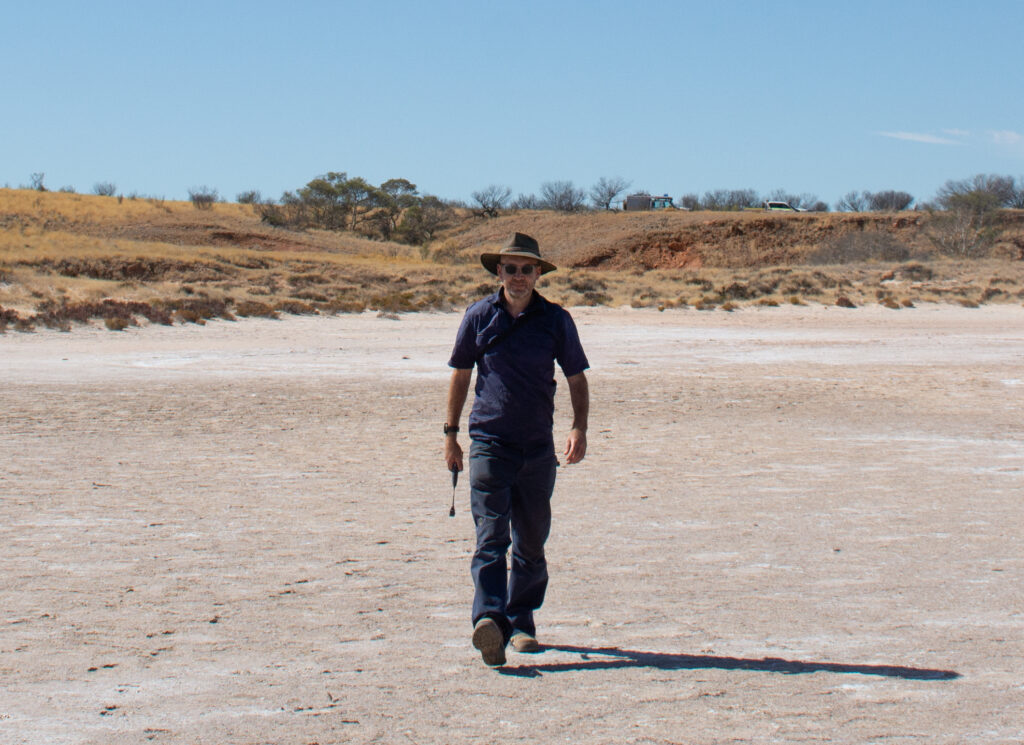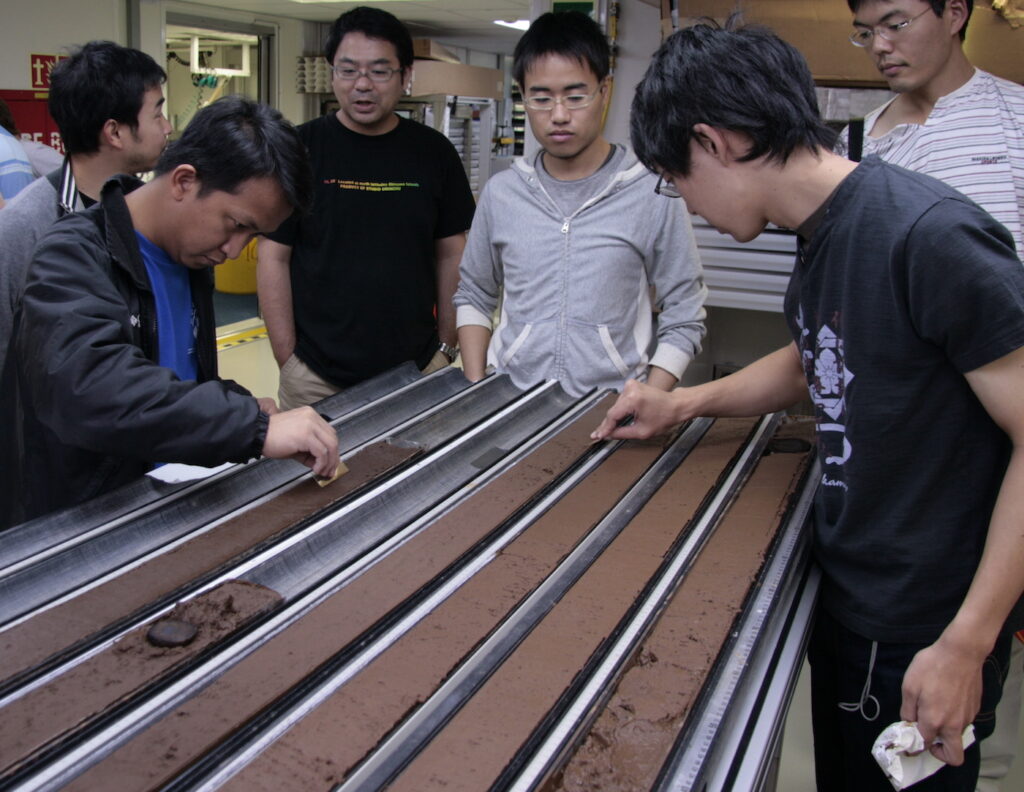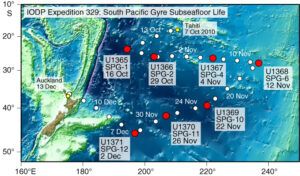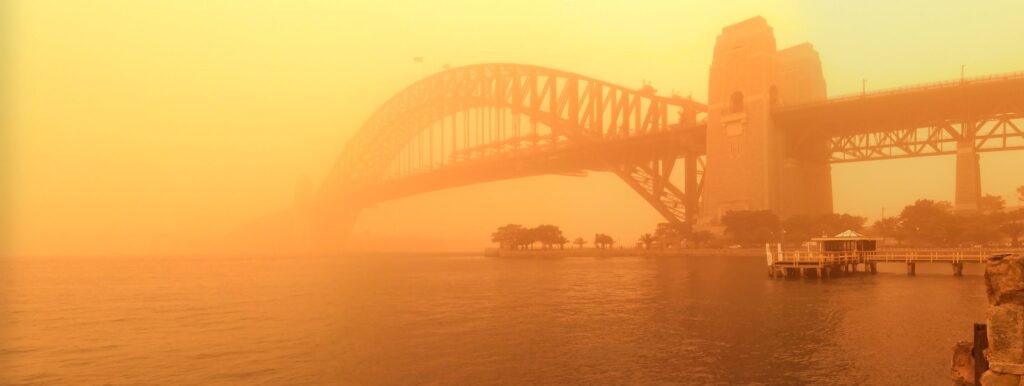Tracking the travels of dust - could ocean cores hold the key?
A project funded by ANZIC’s AILAF Grants aims to investigate.
Dust… everywhere
We all know dust can travel on the wind… and get into everything – usually in small amounts. For researchers like Dr Sam Marx, at the University of Wollongong, that makes studying dust tricky, because it can be hard to detect amongst other geological processes.
Yet, tracking dust – how much is blown, from where, and where it travels to – is important for understanding Earth systems and modelling climate change.

“Dust is an important component of Earth systems and both drives and responds to climate change,” says Dr Marx. “Dust changes atmospheric heat absorption and seeds cloud formation. Dust is also an important source of key ingredients to nutrient-poor remote ocean environments, fertilising phytoplankton growth which draws CO2 into the oceans.”
Yet dust transport is poorly constrained in current global climate models – a situation Dr Marx is keen to redress.
Ocean cores could hold the key
Australia’s iconic red dust is recognisable in deep ocean cores. Deposited in the central Pacific after an 8000km journey from Australian deserts, the dust is strikingly clear in material retrieved by IODP Expedition 329 as fine-grained, red-coloured sediment often referred to as ‘Pacific Red clay.’
For Dr Marx, the ocean cores offer a crucial and unique opportunity which he is planning to exploit using funds from the latest round of ANZIC’s AILAF (ANZIC IODP Legacy Analytical Funding) Grants.

“The cores contain a pure dust signal – relatively free from other sediments – that is very difficult to obtain in any other way. It’s like having had dust-capture equipment stationed thousands of kilometres from Australia for millions of years.” Dr Marx explains.
“This is an outstanding opportunity to increase our understanding of dust contributions and dust chemistry.”

By analysing the sedimented dust and comparing it to the well-characterised geochemical properties of source materials, Dr Marx, along with collaborator Balz Kamber at QUT in Brisbane, plans to precisely map the Australian and New Zealand dust sources. Then the geochemical changes which occur during its long flight can be closely examined.
“We’re looking to construct detailed geochemical signatures of the aeolian (wind-blown) material, and how that signature changes with the distance travelled. We’ll analyse the core samples – at various distances from the dust source in Australia – for major and trace elements, mineralogy and several isotopes.”
These signatures can then be used as a key to identify the often long-distance source of other dust deposits. This will give researchers a clearer understanding of global dust transport.
“If we can construct these signatures,” he says, “we start to open a bigger world of possibilities of reconstructing dust movement across the landscape and globe over time.”

Winning an AILAF Grant from ANZIC
AILAF funds are offered regularly to researchers at ANZIC member institutions for projects which exploit the wealth of samples and data generated through over 50 years of ocean drilling.
“Applying for the AILAFs was the first time that I have been involved in IODP,” says Dr Marx. “I was aware that University of Wollongong was a member and had used ocean data before.”
IODP offered a new world of data.
“When I first started searching, it was easy to get lost in the core repository database!” laughs Dr Marx. “I found proposals were most successful when they were more focused and less complex.”
“Although if you are from a member institution it is possible to get access to samples, it’s the AILAF Grant from ANZIC that makes the work possible in this case, with the $20,000 providing for detailed geochemical analysis of the samples.”
“The more accurately we can geochemically characterise these samples, the better we can constrain dust fingerprints, and the AILAF funding is critical to that,” he says.
“IODP has meticulously maintained and curated a repository spanning approximately 500km around the globe,” comments ANZIC Program Manager, Sarah Kachovich. “This offers a treasure trove of valuable information waiting to be unlocked by the scientific community across diverse disciplines.”
“The aim of these small legacy project grants is to broaden the IODP family and encourage fresh perspectives and expertise to contribute to the program’s ongoing scientific endeavours.”
“By extending this invitation to a wider pool of researchers – including students – IODP hopes to tap into the latent potential of its vast repository and promote greater cross-disciplinary collaboration.”
Find out more about opportunities for AILAF Grants and studying legacy materials and data.
